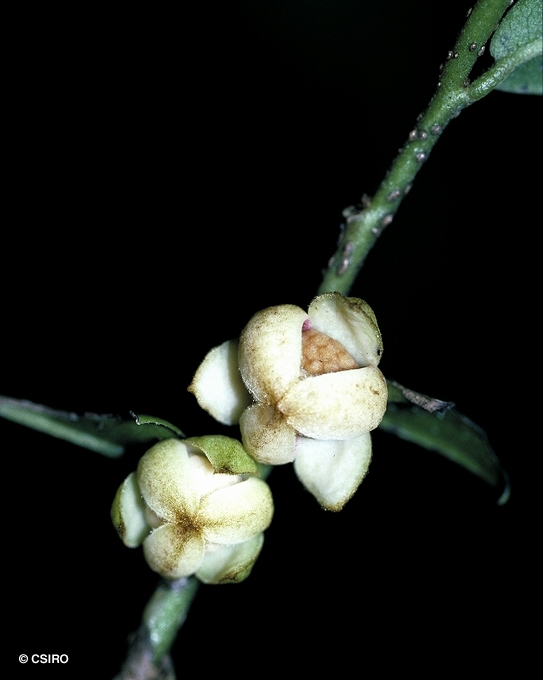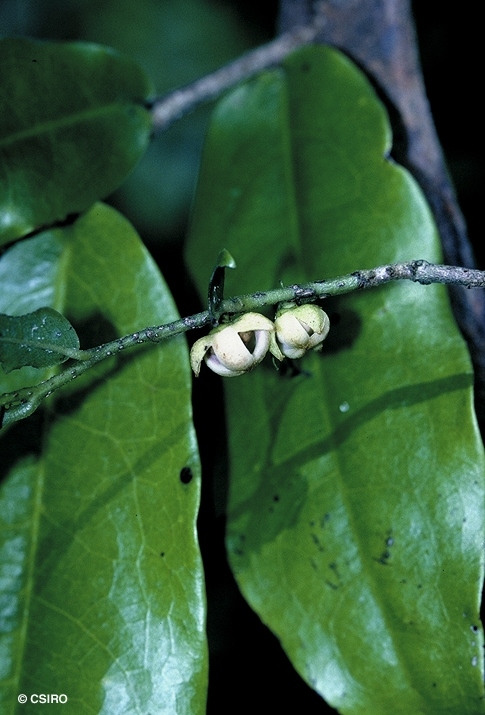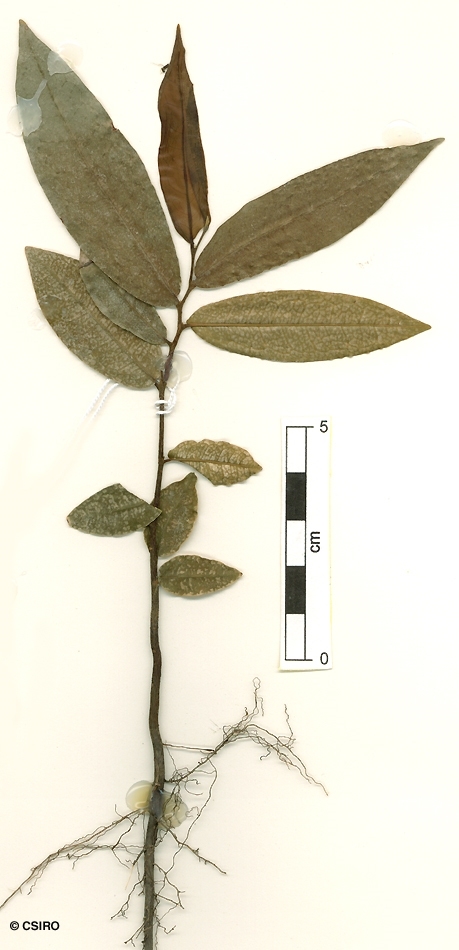Australian Tropical Rainforest Plants - Online edition
Polyalthia xanthocarpa B.Xue & R.M.K.Saunders







Xue, B., Su, Y.C.F., Thomas, D.C. & Saunders, R.M.K. (2012) Taxon 61(5): 1035.
Usually flowers and fruits as a shrub about 1.5-3 m tall.
Leaf blades about 18-24 x 5-6 cm, petioles about 0.4-0.5 cm long. Base of the leaf blade cordate and asymmetrical. Lateral veins more readily visible on the underside of the leaf blade and forming loops well inside the blade margin. Upper surface of the leaf blade arched between the lateral veins.
Flowers about 10-11 mm diam. Sepals short, triangular, about 2 x 3 mm. Petals dimorphic. Outer petals triangular, about 6 x 5 mm, spreading, free from one another. Inner petals about 7 x 3-4 mm, fused, forming an arch over the ovaries and stamens and separating from one another at or following anthesis. Pollen white. Ovaries hairy, about 15-25 ovaries per flower. Ovules 2 per ovary.
First pair of leaves ovate, shortly petiolate, oil dots visible with a lens. Hypocotyl and stem densely clothed in short brownish hairs. Lateral veins forming loops inside the blade margin. Midrib strongly depressed on the upper surface. At the tenth leaf stage: leaf blade lanceolate to elliptic, about 60-70 x 20-25 mm, petiole very short, about 1-2 mm long. Leaf blade unequal sided at the base. Stem, petiole and terminal bud clothed in pale brown to golden hairs. Seed germination time 213 to 592 days.
Endemic to NEQ, known only from the Cooper, Noah and Oliver Creek catchments, Cape Tribulation and perhaps Cedar Bay areas. Altitudinal range quite small, from near sea level to 540 m. Grows as an understory plant in undisturbed lowland and upland rain forest.
Food plant for the larval stages of the Green Spotted Triangle Butterfly. Sankowsky & Neilsen (2000).
Haplostichanthus ramiflorus Jessup, Flora of Australia 2: 449 (2007). Type: Queensland, Pilgrim Sands, NW of Cape Tribulation, 29 Nov. 1984, L.W. Jessup 610. Holo: BRI. Iso: K, L, U. Haplostichanthus sp. Cooper Creek (BG 2433), Australian Tropical Rain Forest Plants, Trees, Shrubs & Vines. : (2003).





